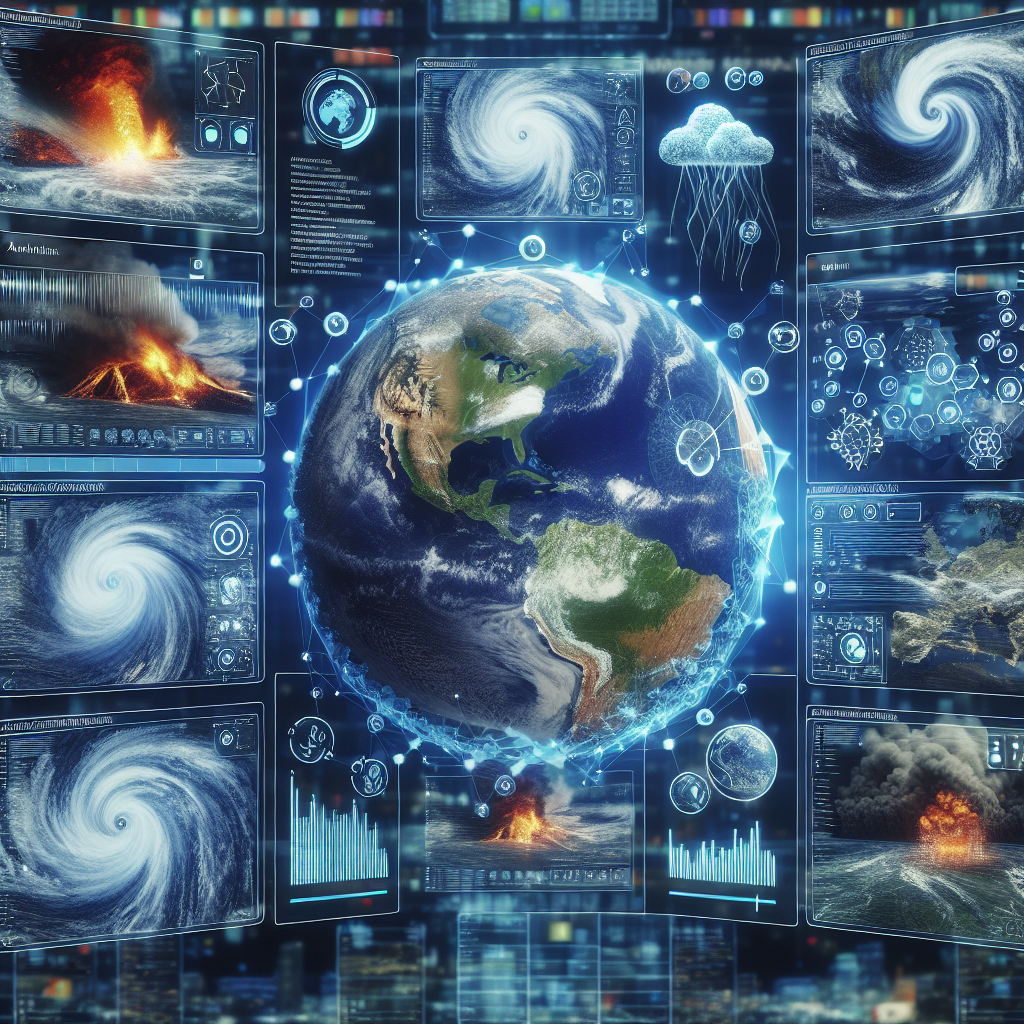In recent years, artificial intelligence (AI) software has been increasingly used as a tool for predicting natural disasters. From hurricanes and earthquakes to wildfires and tsunamis, AI has shown great potential in helping to forecast and mitigate the impact of these catastrophic events. In this article, we will explore how AI software is being used to predict natural disasters and the benefits it offers in terms of early warning systems and disaster management.
One of the key benefits of using AI software for predicting natural disasters is its ability to analyze vast amounts of data in real-time. By processing data from various sources such as satellite imagery, weather sensors, and social media, AI algorithms can detect patterns and trends that may indicate an impending disaster. This allows authorities to issue timely warnings and evacuation orders to residents in affected areas, potentially saving lives and minimizing damage to property.
For example, in the case of hurricanes, AI software can analyze weather data to predict the path and intensity of the storm. By simulating different scenarios and forecasting the potential impact on coastal areas, AI can help emergency responders prepare for the storm and allocate resources more effectively. Similarly, AI algorithms can analyze seismic data to predict the likelihood of an earthquake occurring in a certain region, allowing authorities to take preventive measures and strengthen infrastructure to withstand potential tremors.
Another advantage of using AI software for predicting natural disasters is its ability to improve the accuracy of forecasts. Traditional forecasting methods rely on historical data and statistical models, which may not always capture the complex and dynamic nature of natural phenomena. AI, on the other hand, can adapt and learn from new data in real-time, continuously refining its predictions and increasing their accuracy over time.
Furthermore, AI software can also help in the aftermath of a natural disaster by analyzing satellite imagery to assess the extent of damage and identify areas in need of assistance. By quickly mapping out affected areas and prioritizing rescue and relief efforts, AI can help emergency responders coordinate their actions more efficiently and effectively.
In addition to its predictive capabilities, AI software can also be used to simulate and model the impact of natural disasters on various scenarios. By running simulations based on different factors such as population density, building structures, and environmental conditions, AI can help authorities develop contingency plans and assess the potential risks associated with different disaster scenarios. This proactive approach can help communities better prepare for disasters and minimize their impact on human lives and infrastructure.
Despite its numerous benefits, AI software for predicting natural disasters also raises concerns and challenges that need to be addressed. One of the main challenges is the reliability and accuracy of the data used by AI algorithms. Inaccurate or incomplete data can lead to faulty predictions and misguided decisions, highlighting the importance of ensuring the quality and integrity of the data sources used by AI software.
Another challenge is the ethical and privacy implications of using AI in disaster prediction and management. As AI algorithms rely on vast amounts of data, there are concerns about the potential misuse of personal information and the implications for individual privacy. It is crucial for authorities and developers to implement strict data protection measures and adhere to ethical guidelines when using AI software for predicting natural disasters.
Despite these challenges, the potential of AI software for predicting natural disasters is undeniable. By harnessing the power of AI algorithms and machine learning techniques, we can improve our ability to forecast and mitigate the impact of catastrophic events, ultimately saving lives and protecting communities from the devastating effects of natural disasters.
FAQs:
1. How accurate are AI predictions for natural disasters?
AI predictions for natural disasters can vary in accuracy depending on the quality of the data used and the complexity of the natural phenomena being analyzed. While AI algorithms have shown great potential in improving the accuracy of forecasts, there is still room for improvement in terms of refining the models and ensuring the reliability of the data sources.
2. How can AI software help in the aftermath of a natural disaster?
AI software can help in the aftermath of a natural disaster by analyzing satellite imagery to assess the extent of damage, identifying areas in need of assistance, and prioritizing rescue and relief efforts. By quickly mapping out affected areas and coordinating response efforts, AI can help authorities allocate resources more efficiently and effectively.
3. What are the ethical considerations of using AI for predicting natural disasters?
The use of AI for predicting natural disasters raises ethical concerns related to data privacy, transparency, and accountability. It is crucial for authorities and developers to implement strict data protection measures and adhere to ethical guidelines when using AI software for disaster prediction and management.
4. How can communities benefit from using AI software for predicting natural disasters?
Communities can benefit from using AI software for predicting natural disasters by receiving timely warnings and evacuation orders, improving disaster preparedness and response efforts, and minimizing the impact of catastrophic events on human lives and infrastructure. By harnessing the power of AI algorithms, communities can better protect themselves from the devastating effects of natural disasters.

